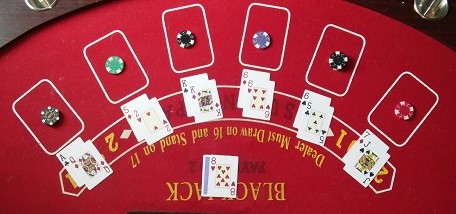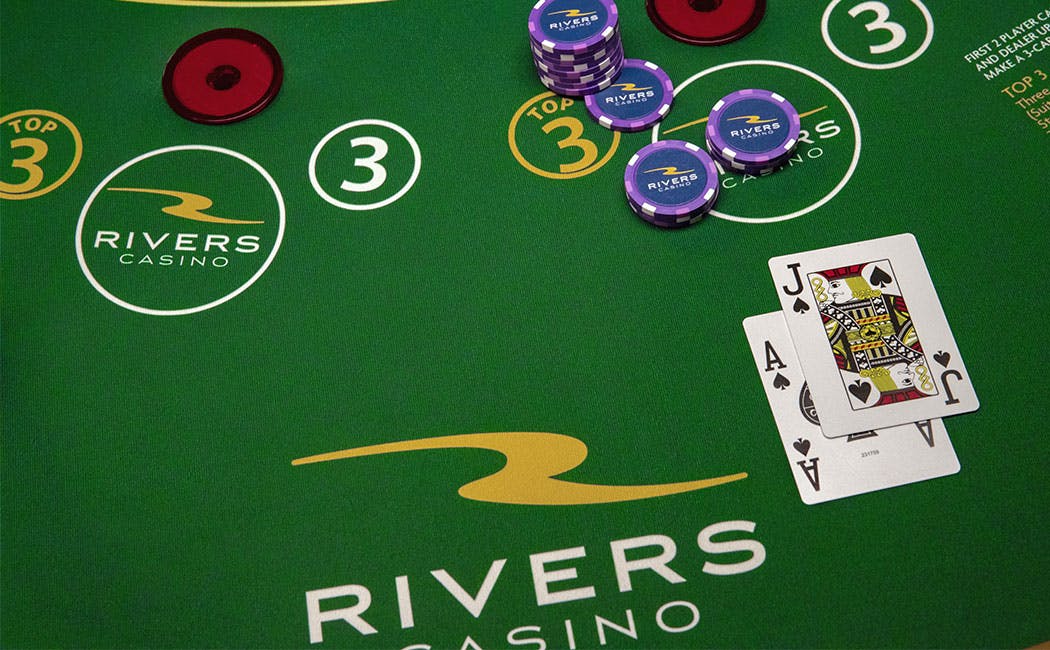How To Deal Blackjack Start

- How To Deal Blackjack Starter
- How To Deal Blackjack Starting
- How To Deal Blackjack Startup
- How To Deal Blackjack Start Up
- How To Deal Blackjack At A Casino
Basic blackjack strategy is based on the mathematics of the game. It has been tested and refined through computer simulations. When it is followed correctly, it reduces the house edge to the minimum, which is usually about one-half of a percent. At any rate, American gaming houses offered the game in the early 1800s, but wasn’t called “blackjack” until the first part of the 20th century. The name comes from a special “bonus” of 10 to 1 that was paid if the player received a black Ace and a black Jack as his first two cards.

One of the popular myths surrounding blackjack in casinos is that the average player can get an edge over the casino if he just plays his hands correctly. In other words, a lot of people think that you can win at blackjack just by mastering basic strategy.
But basic strategy isn’t enough to win at blackjack in most instances.
You need an additional strategy – an advantage technique – to get an actual edge over the casino in blackjack.
This might mean counting cards, but there are other ways, too. I’ve written extensively about counting cards in blackjack in the past.
We bring to you the most comprehensive information on all the different aspects of blackjack. And it is all laid out in an easy to read and smoothly navigable format. Go through our lessons, follow our advice and tips, and start using the strategies we outline to become a master at blackjack and start winning at real money blackjack.
But today I want to take a different approach.
Here’s how to win at blackjack WITHOUT counting cards.
The First Step to Winning at Blackjack Is Mastering Basic Strategy
In blackjack, you have a finite number of potential situations to deal with. The dealer can only have one of the following face-up cards: ace, 2, 3, 4, 5, 6, 7, 8, 9, or 10.
And you can only have one of a handful of potential totals, starting with a total of 3 and going up to a total of 21.
And many of those situations offer obvious strategic decisions. You’d always stand with a total of 21, for example. It’s an automatic winner. You’ll also always stand with a total of 20. You have far too many ways to bust in this situation to ever make it worth your while to hit in that situation.
The same holds true for a lot of your smaller totals, too. Any hand totaling 11 or lower is impossible to bust, so you’ll always at least hit in that situation.
But for many hands, you must compare what you’re holding with the dealer’s face up card to determine the playing decision with the highest expected value. In a lot of these situations, your expected value is negative. Imagine having a hard total of 16 against a dealer’s face up 10, for example. You’re damned if you do and damned if you don’t in that situation.
But, in those situations, some plays have a lower negative expectation than others. Your job is to make the play that loses the least amount of money in the long run.
Luckily, basic strategy is easy to memorize and implement. When you use basic strategy for every blackjack decision, you reduce the house edge to its theoretically lowest possible number. In most casinos and under most rules, this means that the basic strategy player faces a house edge of 1% or less.
You still can’t win in the long run with a house edge of 1% or even 0.5%.
But your probability of being a winner in the short run improve dramatically.

An average blackjack player with no knowledge of basic strategy is probably giving up between 2% and 4% of their house edge.
Advantage Play Techniques and Blackjack
An advantage play technique is a way of playing a casino game that gives you an edge over the casino. The most common advantage play technique is counting cards, but that’s not your only option. You can win at blackjack without counting cards, even though it’s probably the easiest way to get an edge.
How does card counting in blackjack work?
Counting cards is just a means of roughly tracking the ratio of high cards (aces and 10s) to low cards in the deck. When the deck has a higher proportion of high cards, the player is more likely to get a blackjack. That’s a 2-card hand that totals 21, and players love this hand because it pays off at 3 to 2 odds.
Bet $100 on a hand of blackjack, get dealt a natural, and you’ll get a payout of $150.
Card counters raise the size of their bets when their probability of getting a blackjack goes up based on the count.
And counting cards isn’t hard, either.
You just subtract 1 from the count every time you see a 10 or an ace.
You add 1 to the count every time you see a card worth between 2 and 6 points.
If you’re playing in a game with multiple decks, you adjust that running count to account for the extra decks of cards in play. That’s as simple as estimating how many decks are still in the shoe and dividing the running count by that number.
For example, if the running count is +8, and you estimate that there are 4 decks left in the shoe, the true count is only +2.
Why does this matter?
Because you raise your bets proportionally related to the count. You’ll bet more when the count is +8 than you would if the count was +4.
Not everyone wants to learn how to count cards, though.
You Can Win at Blackjack Without Counting Cards by Getting Lucky
The house edge in blackjack is a long-term phenomenon. In other words, your short-term results might look like anything. You’re mathematically expected to lose between 0.5% and 1% of your action at
the table in the long run.
But, in the short run, anything can happen.
How To Deal Blackjack Starter
So, one way to win at blackjack without counting cards is to keep your session short and walk away when you’ve won a specific amount of money. This is called having a “win goal.”
Most gamblers who use win goals set a win goal based on a percentage of their bankroll. For example, you might sit down at a $10 blackjack table with a $200 bankroll for the session. Your win goal might be 50% of that $200 – or $100. In that case, if you ever get to a point where you have $300 or more in chips, you walk away from the table and book your win.
Since blackjack is a negative expectation game, you’ll have more losing sessions than winning sessions over time.
But, unless something weird happens, you WILL inevitably have some winning sessions.
Another Way to Win Is to Bet Really Big and Negotiate Better Rules
Don Johnson is a living example of a blackjack player who won really big at the game without counting cards. He won over $6 million on blackjack in a single evening. Here’s how he did it:
How To Deal Blackjack Starting
To start with, he had mastered basic strategy. Everyone who’s ever been interviewed about him said that he played perfect cards. If you want to duplicate Johnson’s success, start with mastering basic strategy.
The next thing he did was negotiate with the casino. High rollers like Johnson, who bet $10,000 or more per hand, don’t have to play by the same rules as the average casino-goer.
It’s common for high rollers to get loss rebates. This means that the casino offers a player a discount on his losses. For example, if the casino is offering a 10% discount on your losses, and you lose $100,000, you only really lose $90,000 because of the rebate.
Some casinos also give high rollers bonus money to gamble with up front just to get them started gambling. Online casinos do this all the time, but brick and mortar casinos save this kind of treatment for their higher rollers.
Don Johnson negotiated a 20% loss rebate on his action the night he won all that money in Atlantic City.
On top of that, he negotiated specific blackjack rules that reduced the house edge to a tiny percentage. They played with a hand-shuffled, 6-deck show, and the dealer was forced to stand (rather than hit) a total of soft 17.
In total, all the rules changes wound up making this blackjack game a game with a house edge of only 0.25% — making it almost an even money game.
But on top of that, because of his loss rebate/discount, he was only risking 80 cents for every dollar he stood to win.
He had to buy in for a million dollars, but he was guaranteed a 20% discount on his first $500,000 in losses. Also, he wasn’t required to lose the entire million. He could lose the $500,000, quit, and get his $100,000 rebate – leaving him with “only” a $400,000 loss.
On the other hand, if he started winning – which he did – he could just keep playing.
And that’s how he won over $6 million without counting cards.
Other Advantage Techniques in Blackjack
Counting cards isn’t the only strategy for getting an edge at the game of blackjack. Advantage players use other techniques, some of which are well-known.
Dealer tells is one of these techniques. This describes the tendency that a dealer has to give some kind of physical clue after looking at his or her down card. The savvy blackjack player can then adjust his decisions based on the information he gleaned from the dealer tell.

Shuffle tracking is another advantage technique. The idea is that even though decks of cards get shuffled and randomized, they don’t get completely randomized.
If you can keep up with clusters of cards that are heavy with 10s and aces, you can raise the size of your bets when the dealer gets close to using those cards.
Hole carding is similar to dealer tells. It’s when a dealer accidentally reveals his actual down card when he looks at it to check for blackjack. The advantage of knowing which 2 cards the dealer has is obvious from a strategic perspective.
How To Deal Blackjack Startup
Other advantage play techniques exist that advantage players don’t share in public, too.
Conclusion
How To Deal Blackjack Start Up
Counting cards is definitely the easiest way to win at blackjack, but you can without this technique. It’s harder to do, though, and I recommend learning to count cards if you’re serious about becoming a blackjack winner.



